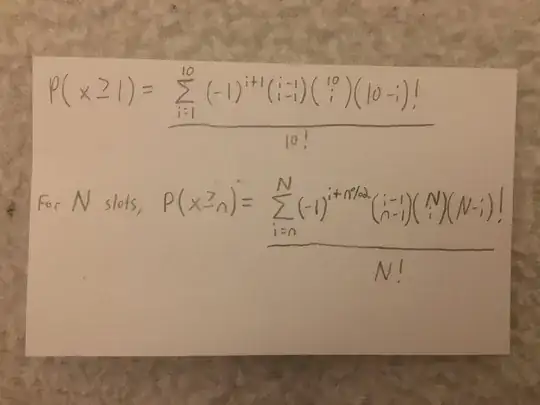I was watching a reality TV show, "Big Brother", as a challenge was played in which the contestants needed to put 10 pictures in the correct chronological order. I became curious about the probabilities of being able to randomly select pictures and place 2, 3, 4... etc. in the correct spot, and after monkeying around in Excel and applying what little I know of the Principle of Inclusion Exclusion, eventually came up with this general formula for matching at least n positions in a field of N total objects:
However, I can't really wrap my head around where the C(i - 1, n - 1) term is coming from. I think it has something to do with compensating for the fact that say, at n = 3, we do not have the i = 1 and i = 2 terms counting the higher cases, and so some term is needed to adjust the count so that, as P.I.E. usually works, everything is counted just once. However, I couldn't really explain it in more precise terms. If someone could explain how exactly that term is derived, or point me to a topic that I should get more mastery in before I can gain an appropriate understanding of this, I would be very grateful. Thank you for your time!